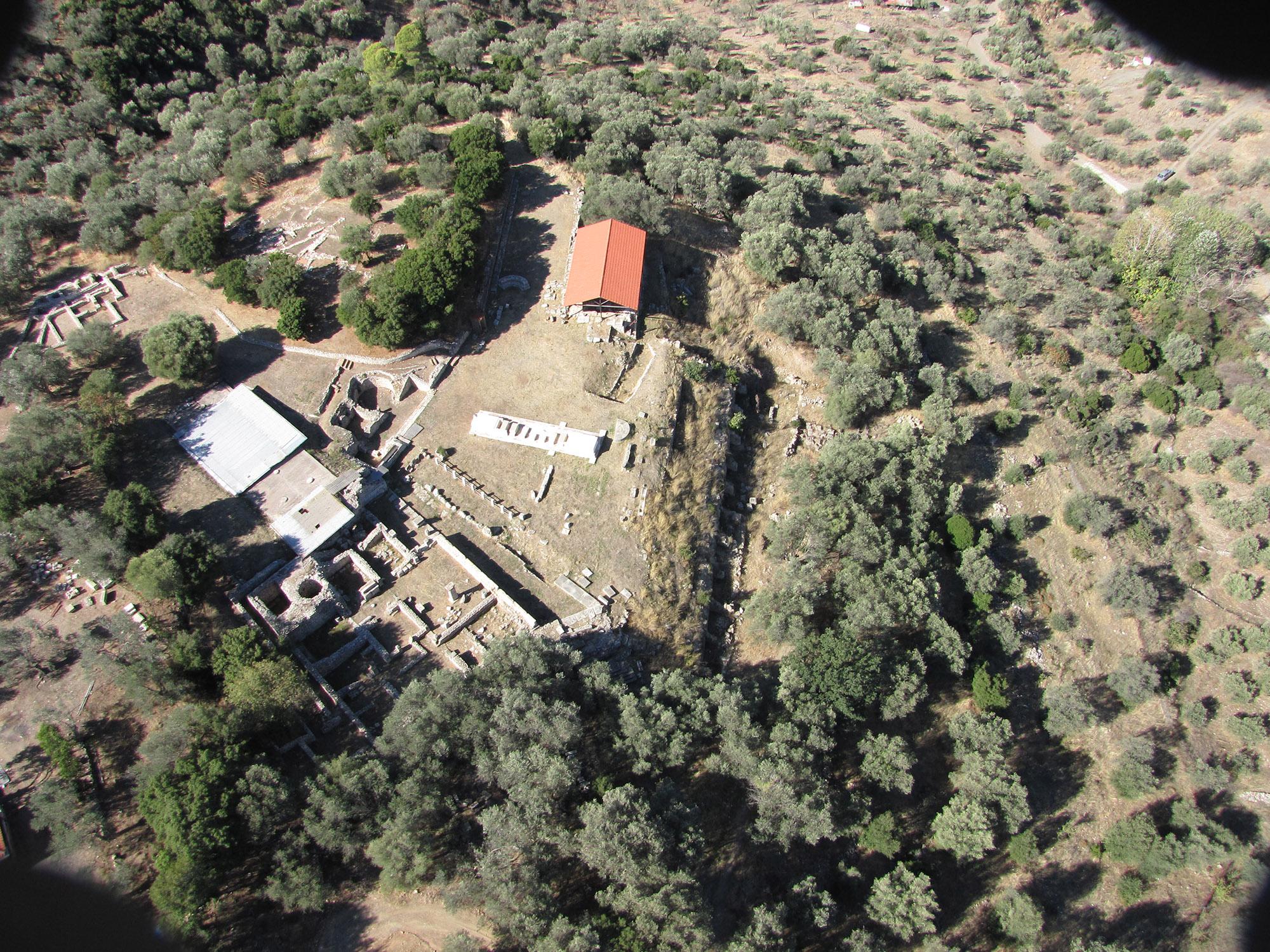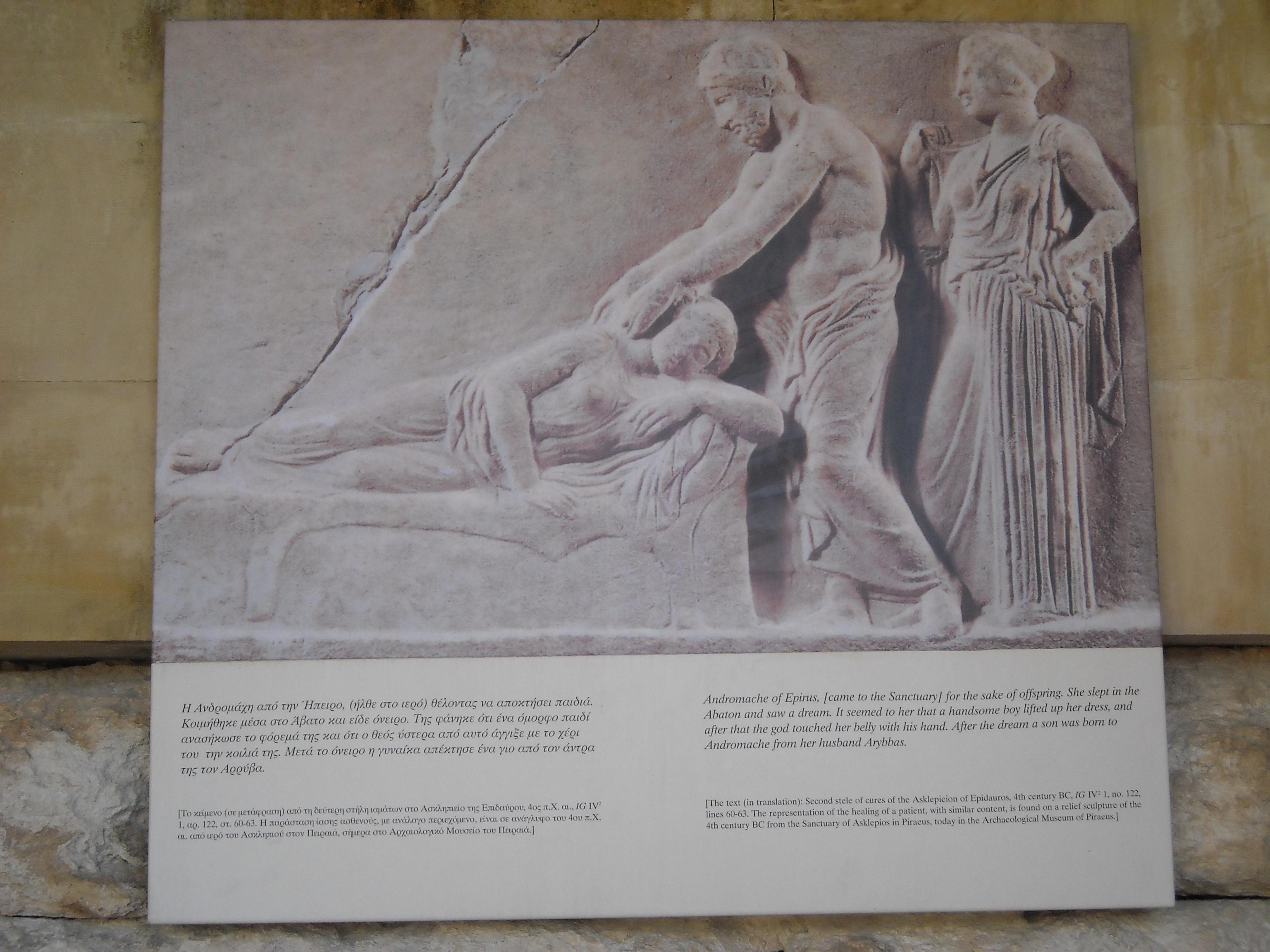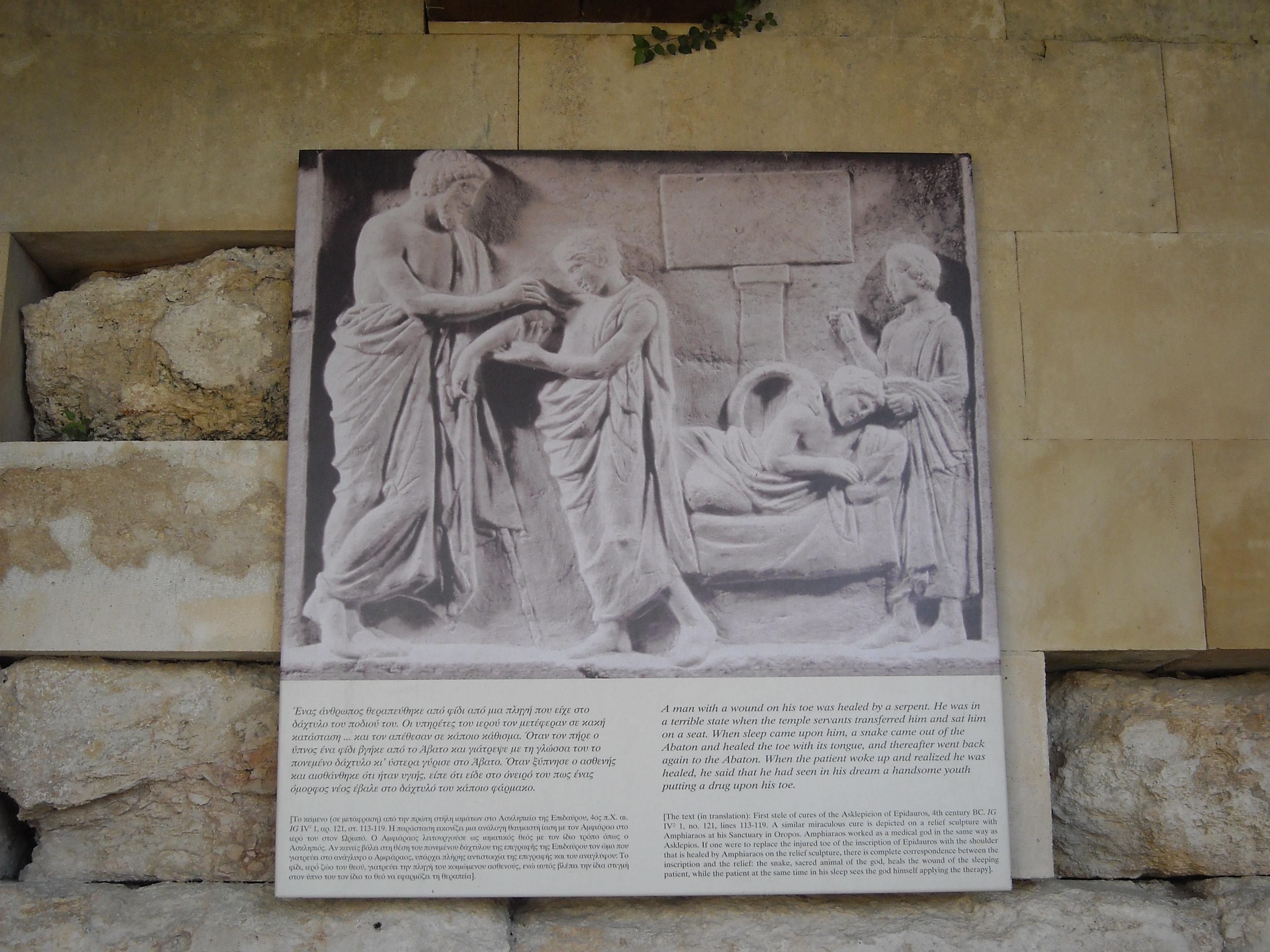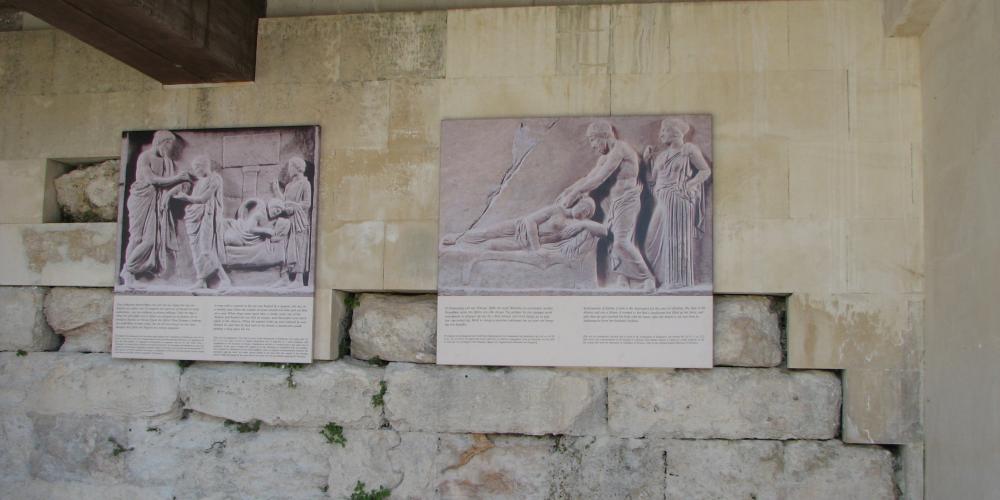Asclepieion of Epidaurus - The sacred centre of healing

The healing cult at Epidaurus had very deep roots. In the third millennium BC, there was a site near the springs on Mt Kynortion that developed into a sanctuary in Mycenaean times, where a female deity and her consort were worshipped. Purification with water, animal sacrifice, and the communal meal with the divine, were performed here as a process supporting man’s health. A similar pre-Dorian cult, of Apollo Maleatas, a god with healing powers, developed in the ruins of this sanctuary as early as the first millennium BC and reached its zenith in the seventh century BC. Emphasising its tradition, the city of Epidaurus, adopted this long-established religious centre as its official sanctuary, even though it was 8 km distant from the city centre and close to the border with the territory of Argos. Each year a cult procession made its way from the city to the sanctuary, along a sacred way, traces of which are visible today.

In the same period or slightly later (6th c. BC), in the plain below the old sanctuary, a twin cult developed that combined the tradition of Apollo Maleatas with related elements of possibly Thessalian provenance, which characterised Asclepius. The god was presented here as son of healing Apollo, who had been abandoned by his mother on Mt. Titthion. The new elements of healing, alongside the traditional ones (water and commensality with the divine), are the bath and the enkoimeses (incubation). The bath purifies and the sleep, imitation of death and resurrection, is the context in which the god approaches the patient in a dream and miraculously cures him/her.
The fourth and third centuries BC were the period of zenith for the sanctuary of Apollo Maleatas and Asclepius. Their space was organised with monumental buildings (temple, tholos, enkoimeterion (dormitory), ceremonial hestiatorion (banquet hall), stadium, theatre, hospice, temple and altar of Apollo Maleatas, etc.), and the city of Epidaurus increasingly drew its importance from this religious centre, whose fame spread throughout the then-known world. The miraculous cure was based on magical energy and auto-suggestion, but the observation and the recording of it created a body of experience and empirical knowledge of scientific healing (exercise, baths, diets, pharmaceuticals, surgical operations, stele with record of healing regime, reference to cure of cancer of the ear). Whole families of physicians began to distinguish themselves in the city of Epidaurus.

In the first century BC the sanctuary was destructively plundered during the war against Rome waged by the King of Pontus, Mithridates. In imperial times, however, and particularly in the second century AD, it enjoyed a renaissance with extensive rebuilding. In the fourth century AD, probably during the reign of Julian the Apostate, the sanctuary was hurriedly reorganised; it was confined to its central part by a perimetric stoa that delimited two adjoining rectangles in inverted L-shaped arrangement. For a time, the ancient pagan and the new Christian religion must have coexisted, as indicated by the Late Antique tombs of idolaters in the south of the sanctuary and the ruins of the large basilica in the north.
Depictions of Healing
Andromache of Epirus, [came to the Sanctuary] for the sake of offspring. She slept in the Abaton and saw a dream. It seemed to her that a handsome boy lifted up her dress, and after that the god touched her belly with his hand. After the dream a son was born to Andromache from her husband Arybbas.

A man with a wound on his toe was healed by a serpent. He was in a terrible state when the temple servants transferred him and sat him on a seat. When sleep came upon him, a snake came out of the Abaton and healed the toe with its tongue, and thereafter went back again to the Abaton. When the patient woke up and realised he was healed, he said that he had seen in his dream a handsome youth putting a drug upon his toe.


